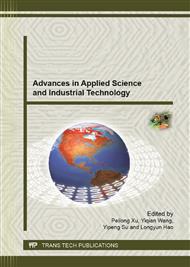p.349
p.353
p.357
p.361
p.365
p.369
p.374
p.378
p.382
Evolutionary Topology Optimization Design of Rotary Lobe of Roots Vacuum Pumps
Abstract:
Aiming at the mass flow and high speed operating condition of roots pumps, the evolutionary structural optimization method was used to optimize rotary lobe of roots vacuum pumps. During the optimization process, filtering and removing algorithm based on the join traits of distortion elements were proposed for solving the structural mutation phenomenon. In this way, the ESO method was improved to ensure the stability and continuity when optimizing. Optimizing respectively with 5 different initial rejection ratios, then a reasonable structure was obtained by finite elements contrastive analysis. Results of finite element comparative analysis indicate that the new structures have better stress distribution, and the material utilization is maximized when applying the inertial load. The maximal stress, strain and deformation of new structure decrease by 17.7%, 17.5% and 18.7%, respectively, and the volume decrease by 55% comparing with primary structures, thus the safety and stability of roots pumps have a significant improvement at the high speed and mass flow operation conditions.
Info:
Periodical:
Pages:
365-368
Citation:
Online since:
September 2013
Authors:
Price:
Сopyright:
© 2013 Trans Tech Publications Ltd. All Rights Reserved
Share:
Citation:


